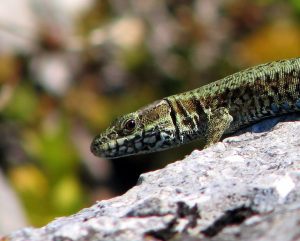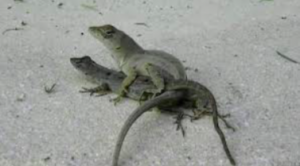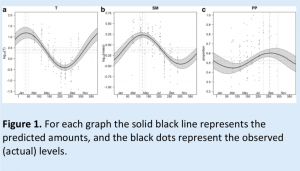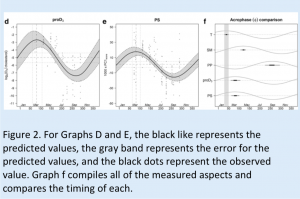 When you hear the phrase “mating rituals”, what comes to mind? Perhaps the big showy feathers of a peacock, or maybe some elaborate dance. Many common rituals rely on visual signals to attract a mate, like bright colors on feathers, or hitting all of the right moves.
When you hear the phrase “mating rituals”, what comes to mind? Perhaps the big showy feathers of a peacock, or maybe some elaborate dance. Many common rituals rely on visual signals to attract a mate, like bright colors on feathers, or hitting all of the right moves.
For many species, however, there may be more going on during mating season than meets the eye. While visual cues are a common way for individuals within a species to communicate, other types of signals can also play an important role.
During reproductive periods, animals will often exhibit changes in their auditory, visual, behavioral, and chemical signals. Chemical signaling, although not thoroughly understood, may be especially important for lizards.
Lizards can convey lots of sophisticated information through secretions using specialized glands in their cloaca (the cavity where lizards release all digestive and reproductive secretions).

A study looking at common wall lizards, Podarcis Muralis, set out to determine whether the chemical makeup of these secretions is seasonally dependent (Mangiacotti et. al.).
There are two main types of information conveyed by these secretions: information about quality of the individual, and information about the identity of the individual.
The lipid component of secretions is generally thought to convey quality information like size, fighting ability, and immune strength. Although not yet completely understood, the protein components are thought to convey identity information.
Communicating with other lizards becomes especially important during the breeding season, and studies have shown an increase in gland activity during this time. For wall lizards, mating season goes from April to June. Since they have a defined mating period, common wall lizards make a good model species to study seasonal changes in their secretions.
In the study, 174 male lizards were captured over the course of 8 months. Researchers analyzed their cloacal secretions, looking at both protein composition and the proportion of proteins to lipids over the study period. As expected, the proportion of lipids to proteins within the secretions depended on the time of year, but the compositions of proteins within the secretions stayed consistent.
The seasonal variation of the proportion of lipids to proteins indicates the importance of the relaying quality information during the breeding season. While the relative amount of protein in the secretions may change, the types of proteins present stayed the same.

In Figure 1, Graph A shows testosterone levels in the males, which peak about a month before the beginning of mating. This type of delay between high expression of testosterone and mating has been shown in other species, such as the green iguana, and is not well understood. However, testosterone levels are very seasonally dependent, and seem to play a part in sexual signaling.
Graph B shows the overall mass of secretion collected from individuals. Secretion sizes were greatest during the breeding season, as expected.
In Graph C, the observed data only weakly correlated with the predictions, but the mating season was the time when the proportion of proteins to lipids was the lowest.

Graph D shows the abundance of provitamin D3, a lipid containing information on the overall quality of an individual. Levels of provitamin D3 peak right when lizards begin fighting for territory and courting female lizards. High levels of provitamin D3 in cloacal secretions signal that the male is healthy and can produce enough provitamin D3 for use in both immune system functioning and cloacal secretions.
The timing of each of these results is compiled in Graph F, showing the co-occurrence of increased testosterone and increased provitamin D3. The characteristics of the secretions and the changes over the study period all suggest that these secretions play an important role during breeding, and that the protein components do in fact rely information about the identity of each lizard.
Lizards can use cloacal gland secretions to communicate complex messages during the mating season. Chemical signaling may not be as obvious at first, but lizards rely heavily on these sophisticated messages to communicate with potential mates.
Citations
